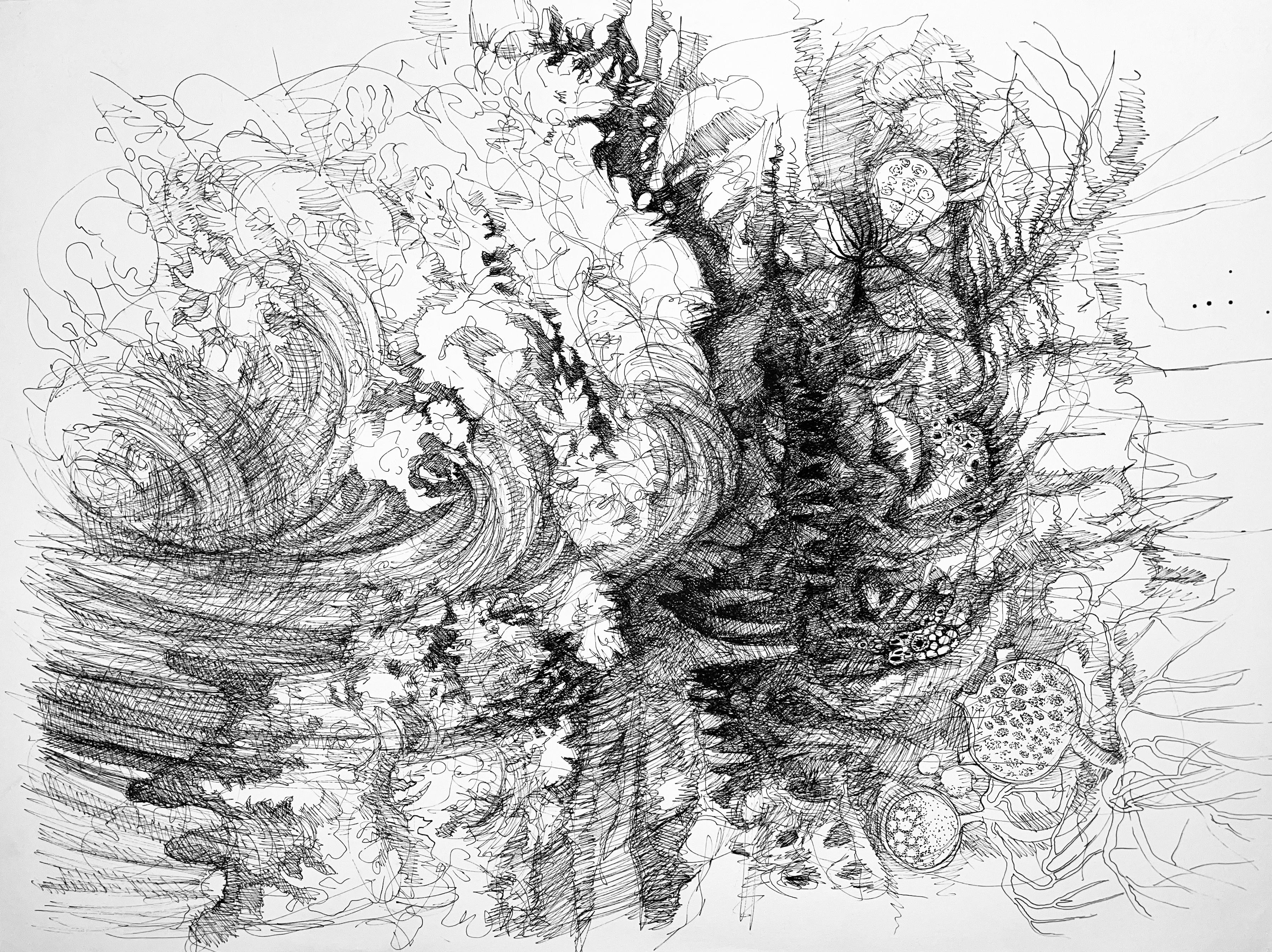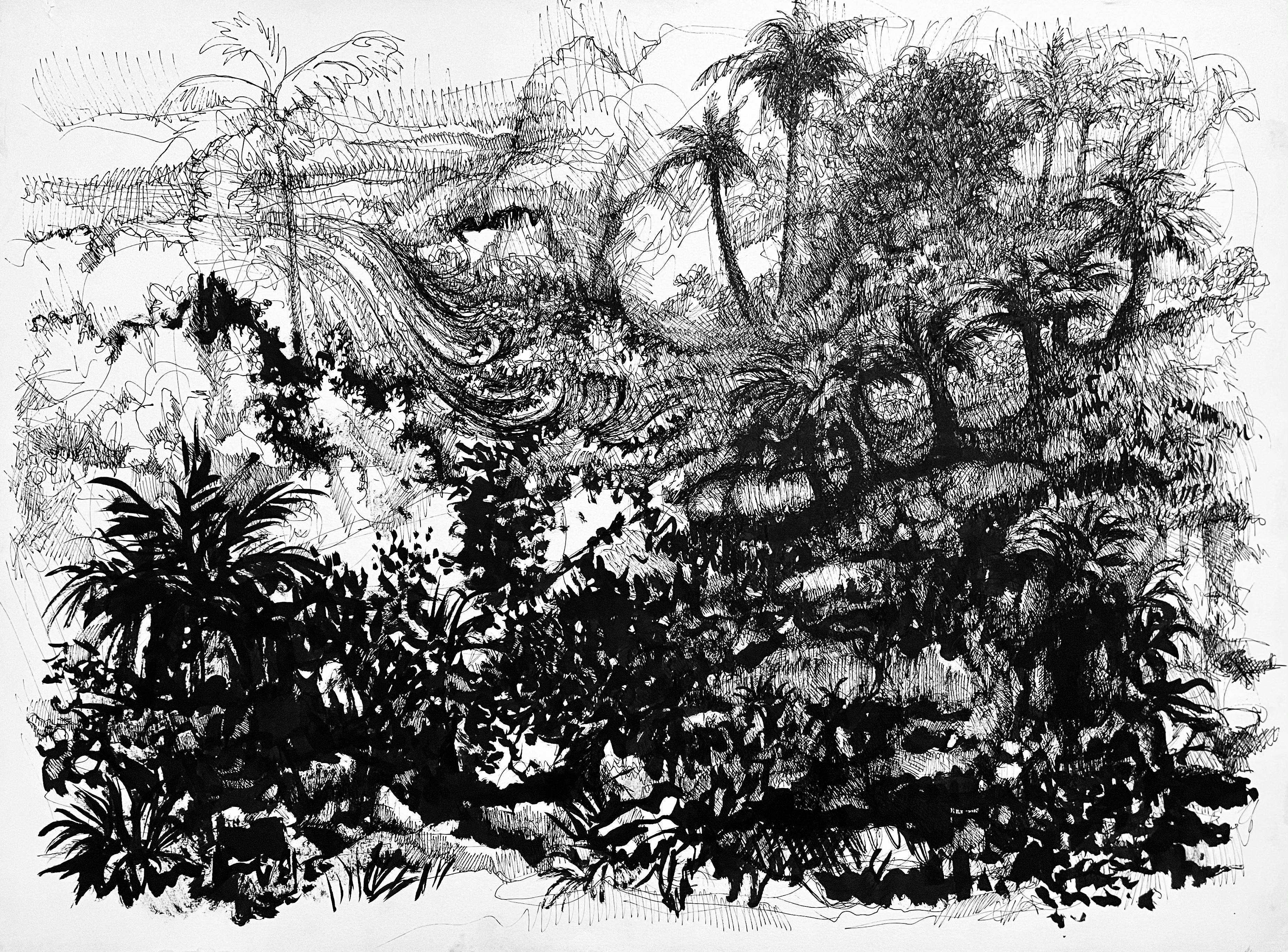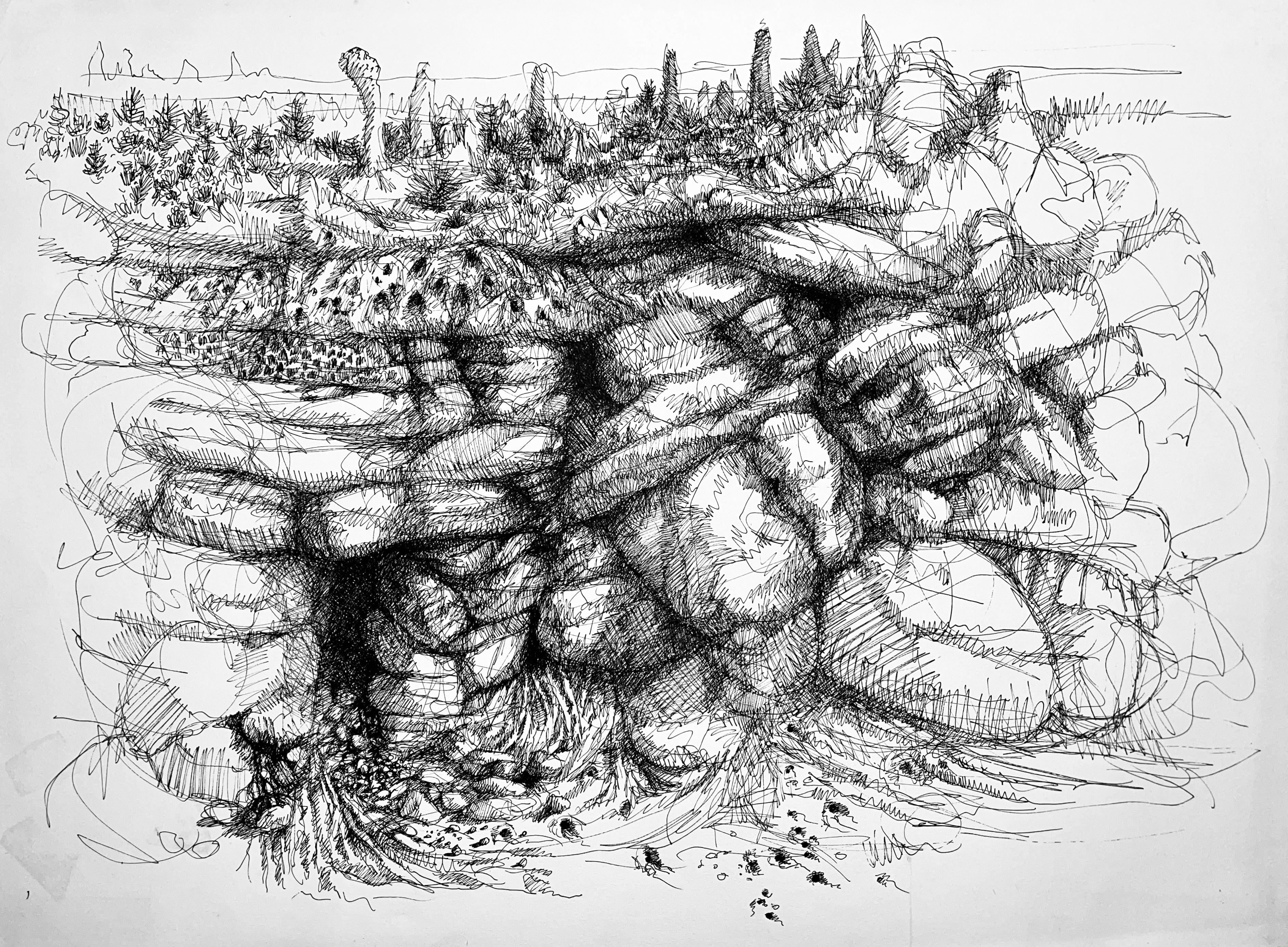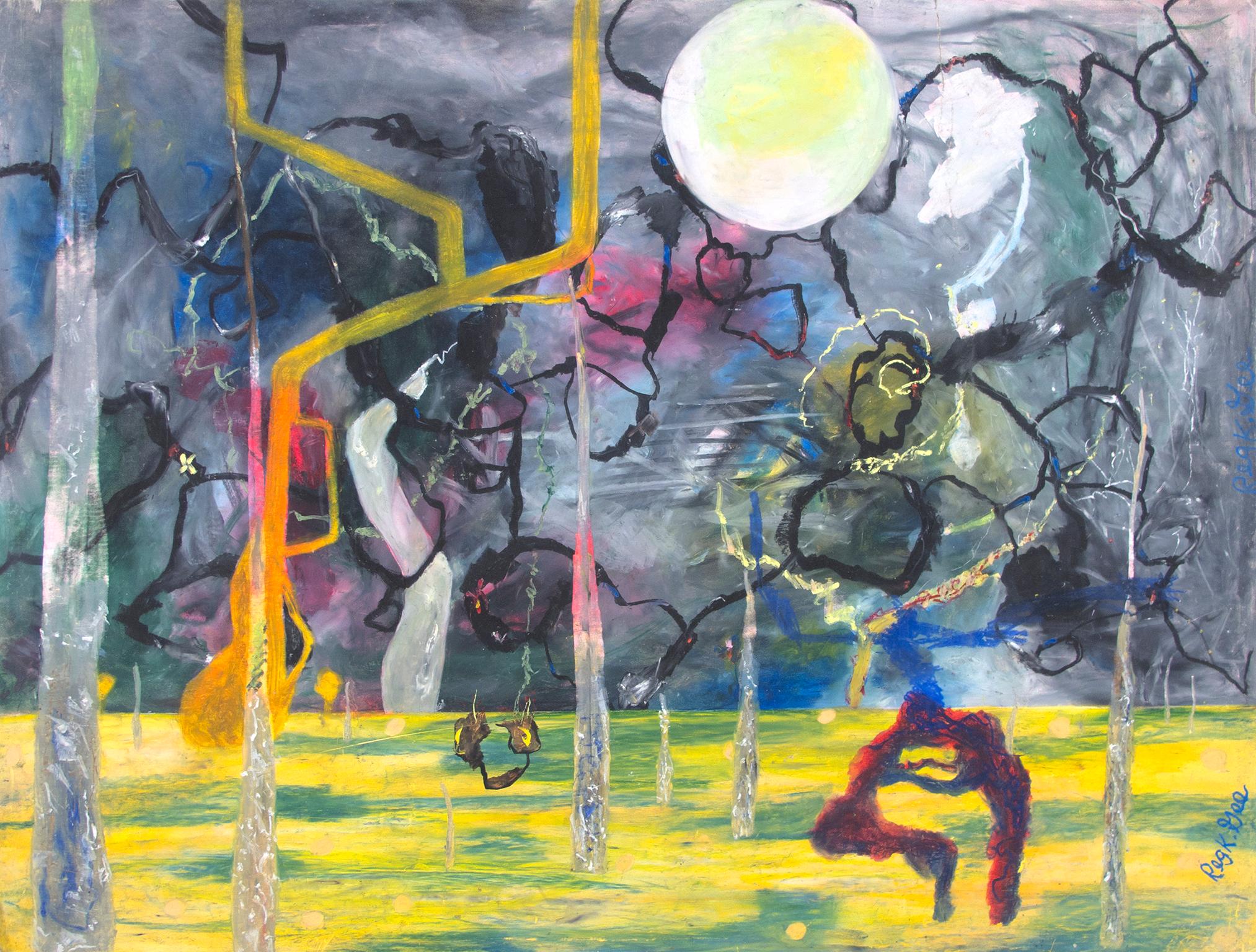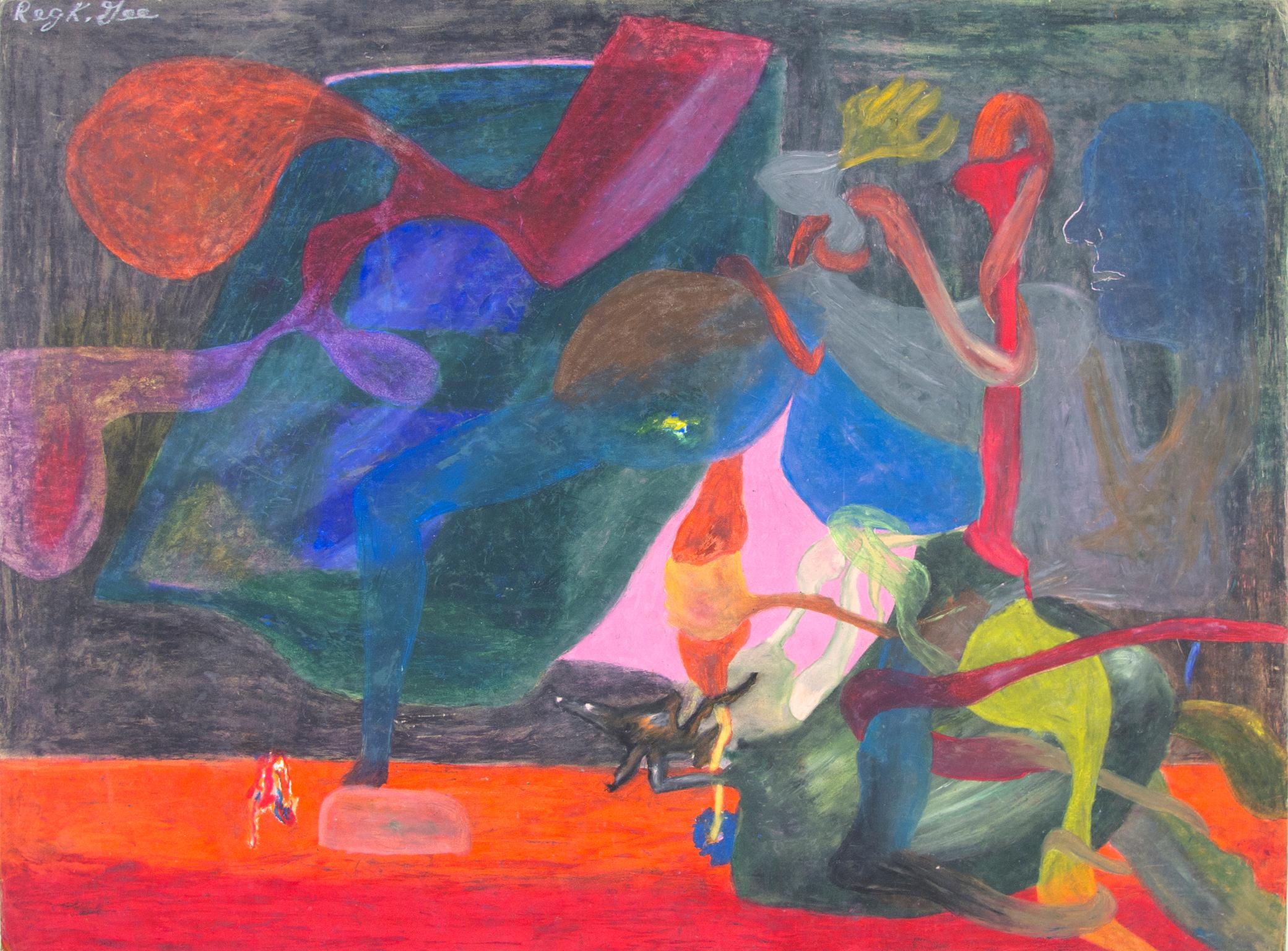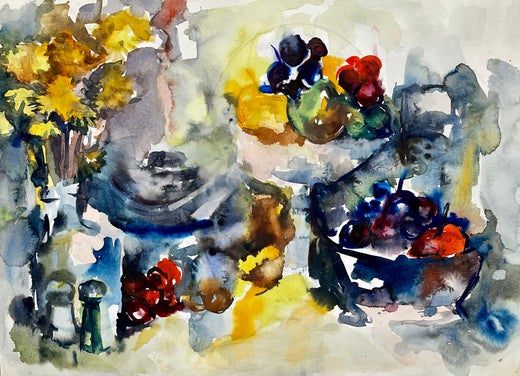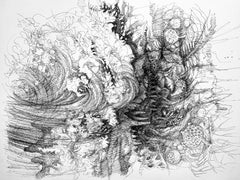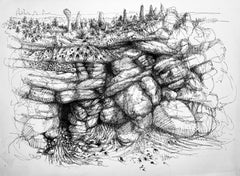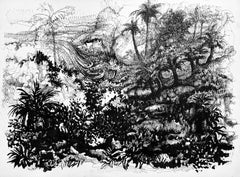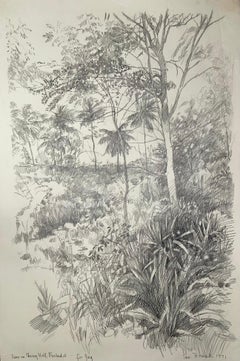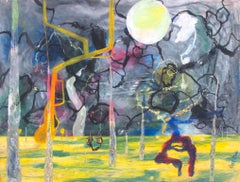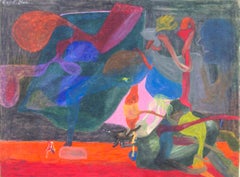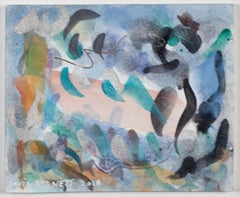Ian Hornak(Apocalyptic Tropical Landscape) Untitled1973
1973
About the Item
- Creator:Ian Hornak (1944 - 2002, American)
- Creation Year:1973
- Dimensions:Height: 22 in (55.88 cm)Width: 30 in (76.2 cm)
- Medium:
- Movement & Style:
- Period:
- Condition:
- Gallery Location:Fairfield, CT
- Reference Number:1stDibs: LU134217434422
Ian Hornak
Painter and draftsman Ian Hornak created vivid hyperrealist and Photorealist works, and was celebrated for his visionary incorporation of multiple-exposure photography into his landscape paintings.
The subject matter at the heart of the world’s finest Photorealist works flickers between crystal-clear reality and dreamy illusion, and Hornak’s representational art is just as compelling, enveloping the viewer with rich imagery and vibrant colors.
The painter was born John Francis Hornak in Philadelphia to Slovakian immigrants who moved to New York when he was still an infant. He became enamored of visual art at an early age — for his ninth birthday, Hornak received a set of oil paints and a book about Renaissance paintings. He reproduced many of the book’s photos of the works of Michelangelo, Leonardo da Vinci and others so well that they looked like the photographs themselves.
Hornak studied art at the University of Michigan and Wayne State University. After earning his bachelor's and master's degrees in fine arts, he moved to New York City in 1968 and befriended Lowell Nesbitt. The realist artist introduced him to Willem de Kooning, Robert Motherwell, Robert Indiana and others. Hornak resisted the Abstract Expressionist and Pop styles of the era, instead creating work that was noted for its Surrealist and even Romantic elements.
In 1970, Hornak debuted his first paintings in his multiple-exposure style. A year later, the Tibor de Nagy Gallery hosted his first New York City solo exhibition, and his prominence in the art world grew. From 1986 until his death in 2002, Hornak produced botanical and still-life paintings inspired by Flemish and Dutch masters.
Hornak’s work can be found in the permanent collections of many institutions, such as the Smithsonian American Art Museum, the Smithsonian National Museum of American History and the Library of Congress.
On 1stDibs, find authentic Ian Hornak paintings, drawings, prints and more.
- ShippingRetrieving quote...Shipping from: Fairfield, CT
- Return Policy
More From This Seller
View All1970s Surrealist Landscape Drawings and Watercolors
Ink
1970s Surrealist Landscape Drawings and Watercolors
Ink
1970s Surrealist Landscape Drawings and Watercolors
Ink
1970s Surrealist Landscape Drawings and Watercolors
Pencil
Early 2000s Photorealist Landscape Drawings and Watercolors
Archival Paper, Ink
Early 2000s Photorealist Landscape Drawings and Watercolors
Ink, Archival Paper
You May Also Like
1980s Surrealist Abstract Drawings and Watercolors
Ink, Graphite
1990s Surrealist Abstract Drawings and Watercolors
Oil Pastel, Illustration Board
1990s Surrealist Abstract Drawings and Watercolors
Oil Pastel, Board
2010s Contemporary Abstract Drawings and Watercolors
Ink, Watercolor
2010s Abstract Landscape Drawings and Watercolors
Ink, Mixed Media, Acrylic, Watercolor
1950s Contemporary Landscape Drawings and Watercolors
Mixed Media, Watercolor, Ink
